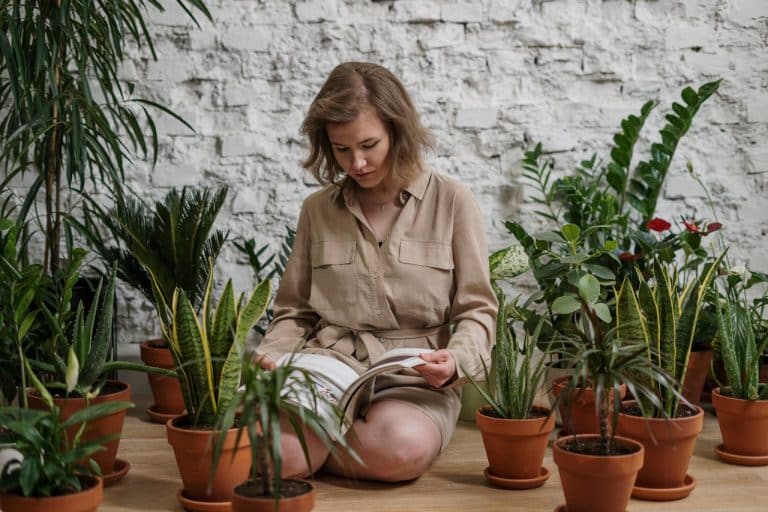Your greenhouse is home to your plants, and therefore, you must keep it perfect every day. But you may be one of the gardeners who face challenges like extreme heat, dry air, or excessive moisture in your greenhouse that harm your plants.
The secret is controlling your greenhouse microclimate.
A microclimate is that specific climate inside your greenhouse. One that’s different from the outside weather. When you control this microclimate, your plants grow well no matter what happens outside.
But how do you know you have a microclimate problem? You’ll experience common problems such as hot spots that cook plants, cold corners where nothing grows, and dry air that makes leaves brown. Even too much moisture causes fungal diseases.
These issues turn your greenhouse into a plant killer.
The good news is that there are ways to fix these problems and keep your grow room cool. Very simple tips that don’t need expensive equipment but just basic techniques.
Here are tips for temperature and humidity control in your greenhouse.
Control Temperature
The first tip on mastering microclimate is controlling your greenhouse temperature. Heat moves in predictable ways inside your greenhouse. Hot air goes up, cold air goes down, and still air creates problem zones that influence the kind of temperature inside your greenhouse. So, how do you work around this to get that perfect temperature for your greenhouse?
Add Water Dish
Water dishes fight extreme heat inside your greenhouse. Water evaporates and cools the air, dropping temperatures by 5-10 degrees in hot spots.
Use wide, shallow containers for more surface area and better cooling, so try old baking sheets or plant saucers. Dark containers work best because they absorb more heat.
Now, put these shallow trays of water around your greenhouse, placing them near your hottest areas. Look for places with no airflow, like the south walls, glass panels, and corners.
Use Mini Fans
Another technique for controlling your greenhouse temperature is using mini fans. They create gentle air flow, ensuring there is moving air, which stops hot and cold zones. Moving air spreads cool, humid air everywhere.
A small fan costs as little as $100 and makes a big difference in your greenhouse microclimate. Timer fans work best because you can run them when it’s hottest and adjust speed depending on your plant’s needs. Avoid all-day fans, which can dry out plants.
Also, don’t make strong drafts with your fan because they stress plants and dry them out too fast.
When placing the fans, point them at the water dishes for extra cooling. Water and air movement together make the best system for cooling a greenhouse, fighting heat and still air.
Boost Humidity Fast
Plants lose water through their leaves to cool themselves down. Low humidity makes the plants close their pores, which stops their natural cooling systems. Hence, the need to boost your greenhouse’s humidity fast. How do you boost humidity?
Group Plants together
Some plants like Zebra, Snake, and Spider plants help absorb humidity naturally, thus controling humidity in a greenhouse environment. These plants absorb excess moisture from the air.
You can also group plants by their water needs to create humid spots. For example, tropical plants like high humidity, so group them. Succulents like it drier, so keep them separate. You’ll be creating different humidity zones, which cost you nothing and work right away.
Grouped plants shade each other, too, which helps control heat.
Mist Leaves Daily
Misting gives instant humidity and cooling by releasing fine water drops that evaporate fast. These tiny droplets add moisture to the air while cooling plant surfaces, which works great for tropical plants and hot days.
Mist in the morning so leaves dry by evening because wet leaves get fungal problems at night. Use clean water to avoid mineral buildup. Don’t use tap water which contains chemicals that hurt some plants.
Find areas that get too dry using a humidity area to mist. Tropical plants like tree ferns and orchids need daily misting, while succulents and cacti need less.
Seal Tight
To control temperature and humidity in your greenhouse, you need to seal leaks to keep your controlled air inside. Air leaks ruin microclimate control, letting outside air sneak through gaps, bringing unwanted heat, cold, or moisture.
Caulk gaps
Small gaps let huge amounts of air through. We’re talking of a quarter-inch gap in a three-foot window, which equals a baseball-sized hole. This kind of leak doubles your energy costs without even knowing it.
If your leak is on glass areas, use clear caulk; otherwise, on metal frames, use paintable caulk. Check for leaks mostly where different materials meet, especially around foundation joints and corners. Work on calm days when you can feel air movement through the gaps.
Check your caulk every season because temperature changes make materials expand and contract, creating new gaps.
Weatherstrip Frames
Weatherstripping creates a tight seal when closed but still lets doors open normally, which gives you the perfect balance for access and climate control. You need flexible seals on your doors and windows that work as they open and close.
Pick your weatherstripping based on your gap size and door type. Foam strips, for example, are perfect for small gaps while rubber seals handle bigger spaces. We have sticks on strips, which are easy to install but don’t last long.
Replace weatherstripping when it gets flat, cracked, or pulled away from surfaces. Good weather stripping should spring back when you press it and create a complete seal around the entire frame.
Monitor the Climate Daily
You can’t control your greenhouse temperature and humidity if you don’t measure it.
Check the Gauge Often
Get a good thermometer and humidity meter that shows your temperature ranges when you’re watching.
Place meters at plant height, not at eye level. Conditions vary greatly between the floor and shoulder height. Use multiple meters to help you map conditions throughout your whole greenhouse and identify problem spots.
Check readings at the same time every day to establish clear patterns. Morning readings will show you overnight conditions, while afternoon readings reveal peak stress times. Regular monitoring will help you take action before plants suffer.
Log Reading
After checking your readings, write them down in a simple notebook or use a mobile plant app to track your greenhouse conditions.
Record the date, time, temperature, humidity, and any observations about plant health or unusual conditions. Note weather patterns and equipment changes. They can help link plant problems to specific environmental causes.
For the best results, review your logs weekly to spot developing trends because slow changes are hard to notice day by day. Early detection through good record-keeping saves plants and prevents bigger problems.
Final Thoughts
Your greenhouse temperature and humidity work together to create the perfect environment for your plants. When you control both of these factors, your plants will thrive and produce the results you want. Start with basic steps like placing water dishes around your greenhouse, getting air moving with small fans, sealing up gaps where outside air sneaks in, and monitoring your temperature and humidity daily.
These simple greenhouse temperature and humidity control tips solve most problems without spending much. Watch your plants progress and add more techniques as needed, adjusting these ideas based on what you see and how your plants respond.













